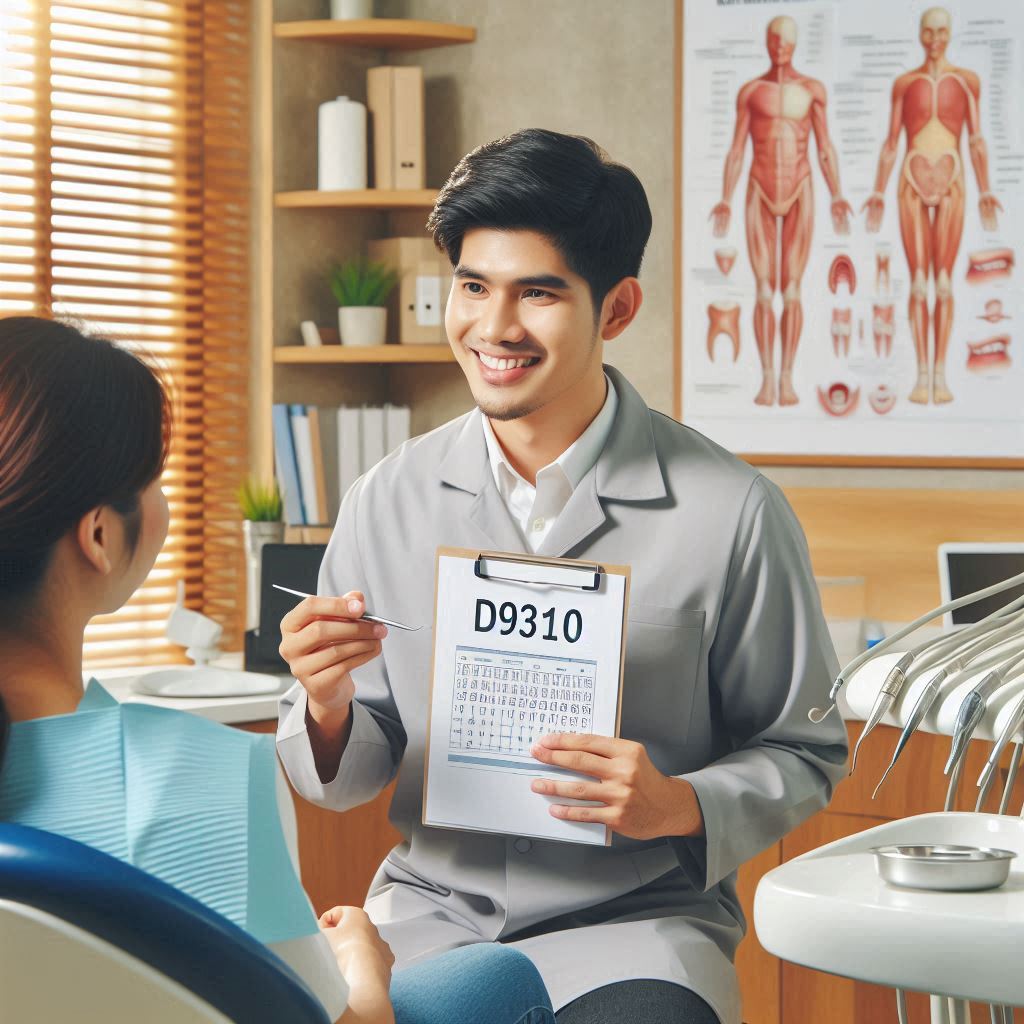D9310 Dental Code
The D9310 dental code is a crucial yet often misunderstood component of dental billing. It refers to a consultation with a medical professional—a service that bridges the gap between dentistry and medicine. Whether for diagnosing systemic conditions affecting oral health or coordinating care with physicians, D9310 ensures proper documentation and reimbursement for interdisciplinary consultations.
This guide will explore every aspect of D9310, from its definition to billing best practices, ensuring dental professionals maximize its utility while avoiding common pitfalls.

2. Understanding the D9310 Dental Code
Definition and Purpose
D9310 is a diagnostic code under the Current Dental Terminology (CDT) used when a dentist consults with a physician or another healthcare provider regarding a patient’s condition. Unlike routine dental exams, this code applies specifically to interprofessional communication—such as discussing a patient’s diabetes management in relation to periodontal health or reviewing medication impacts on oral tissues.
When Is D9310 Used?
- Medical-Dental Collaboration: When a dentist consults a physician about systemic conditions (e.g., diabetes, cardiovascular disease) affecting oral health.
- Medication-Related Concerns: Discussing drug-induced xerostomia (dry mouth) or bisphosphonate-related osteonecrosis.
- Pre-Surgical Clearance: Coordinating with a physician before oral surgery for high-risk patients.
3. Key Differences Between D9310 and Other Consultation Codes
| Code | Description | Usage |
|---|---|---|
| D9310 | Consultation with a medical professional | Used when a dentist discusses a patient’s case with a physician |
| D0140 | Limited oral evaluation | Problem-focused exam, not involving medical consultation |
| D0150 | Comprehensive oral evaluation | Full dental exam, unrelated to physician consultation |
Why D9310 is Unique:
- It does not involve direct patient treatment.
- It focuses on interprofessional communication rather than clinical procedures.
4. Clinical Scenarios Requiring D9310
- Oral-Systemic Health Links: A patient with uncontrolled diabetes may need periodontal treatment adjustments based on physician input.
- Anticoagulant Management: Dentists may consult cardiologists before extractions for patients on blood thinners.
- Cancer Therapy Coordination: Oncologists and dentists collaborate to prevent osteoradionecrosis in radiation patients.
5. Billing and Reimbursement for D9310
Insurance Coverage
- Medical vs. Dental Insurance: Some medical insurers may cover D9310 if the consultation relates to a medical condition.
- Medicare/Medicaid: Coverage varies by state; proper documentation is essential.
Documentation Requirements
- Referral Notes: Must include the physician’s name, reason for consultation, and outcome.
- Time Logs: Some insurers require documentation of time spent in consultation.
6. Common Misconceptions About D9310
❌ Myth: D9310 can be used for routine patient education.
✅ Fact: It is strictly for interprofessional consultations, not patient discussions.
❌ Myth: D9310 is reimbursed the same as a dental exam.
✅ Fact: Reimbursement rates vary and may be lower than procedural codes.
7. Best Practices for Dentists Using D9310
✔ Maintain Detailed Records – Log all consultations with dates and physician names.
✔ Verify Insurance Policies – Confirm coverage before billing.
✔ Educate Staff – Ensure front desk and billing teams understand when to apply D9310.
8. Case Studies: Real-World Applications of D9310
Case 1: Diabetic Patient with Periodontitis
A dentist consulted an endocrinologist to adjust the patient’s diabetes medication, improving periodontal outcomes.
Case 2: Pre-Surgical Clearance for Anticoagulated Patient
A prosthodontist coordinated with a cardiologist to safely perform implant surgery.
9. Legal and Ethical Considerations
- HIPAA Compliance: Ensure patient data is securely shared.
- Informed Consent: Patients should be aware of interprofessional consultations.
10. Future Trends in Dental Consultations
- Telehealth Integration: Virtual consultations between dentists and physicians may increase.
- AI-Assisted Diagnostics: Automated systems could streamline referrals.
11. Conclusion
The D9310 dental code facilitates essential collaboration between dentists and physicians, improving patient outcomes. Proper documentation, insurance awareness, and ethical considerations ensure its effective use. As healthcare becomes more integrated, D9310 will remain a vital tool in comprehensive patient care.
12. FAQs
Q1: Can D9310 be billed for a phone consultation?
A: Yes, if documented properly, phone or virtual consultations qualify.
Q2: Does D9310 require a referral form?
A: While not always mandatory, a referral note strengthens insurance claims.
Q3: How often can D9310 be billed per patient?
A: It depends on medical necessity; frequent consults may require justification.


